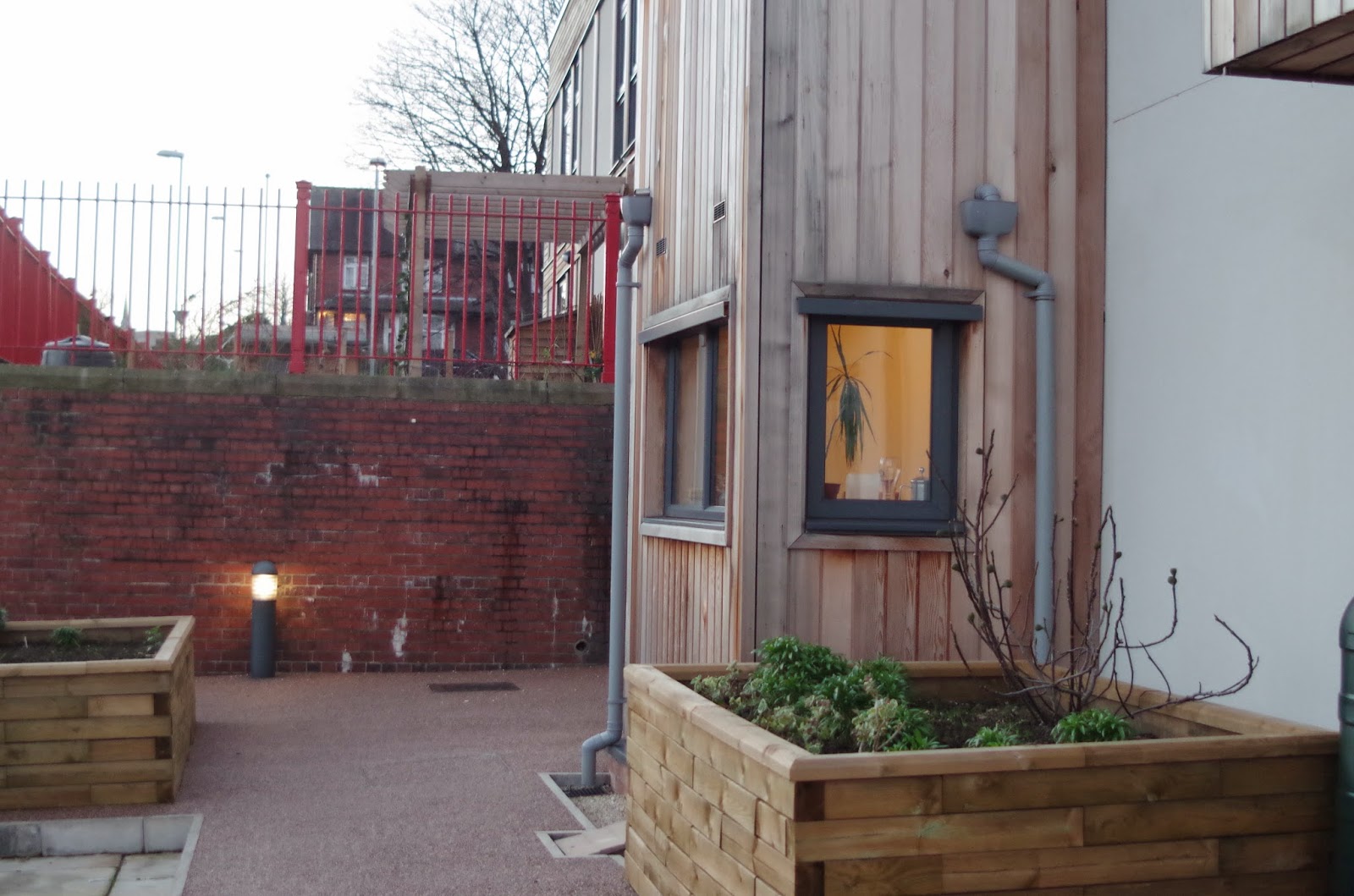This was also an opportunity to see her newly insulated house, having followed her blog (with photos!) describing her efforts and lessons learned.
 |
| Isabelle's 100-year-old front door |
Unfortunately there is currently little support for other types of houses, where outside renders or boards change the appearance of your home, and interior insulation boards are disruptive to install as you have to redecorate afterwards. There are also issues when your front door opens directly into the living room, so the door and a thick curtain was one of the first things they did, as you can see in the photo!
My next visit was to Charlotte's house, where we talked about how much easier she finds it to travel by bus or train with her 8-month-old baby, rather than trying to drive and tend to a baby at the same time. Funny that so many people use their kids as evidence that they need a car... Charlotte has both cavity wall and loft insulation, and like me grows her own veg (she even has chickens!) The cycling has taken a bit of a break for now till her baby boy is a little bit bigger.
I finished the day at Lilac, an innovative development of 20 homes built using sustainable techniques (straw bales and timber, with the timber strengthened by the odd steel joint to provide good moment-bearing capacity on things like balconies).
 |
| Edible planters outside the community house at the main entrance to LILAC |
 |
| The pond aids biodiversity and puts SUDS at the heart of the community. Homes are timber frame with straw bale walls |
This is a co-housing arrangement, where people know their neighbours and have a mixture of private and common space: 8 houses with gardens and 12 flats of various sizes arranged around a courtyard, shared bike sheds, workshop, laundry, play area and allotments and a commitment to be neighbourly.
People talk about the "sharing economy" but this arrangement facilitates low-carbon living: much more efficient if 20 households have access to 2 lawn mowers, 5 washing machines and 12 cars between them rather than one each (the local council normally requires two parking spaces per dwelling!) You can read more about the community aspect of LILAC here.
Sustainable urban drainage (SUDS) is provided by water butts on every drainpipe, with run-off from landscaped areas/paths and any overflow from the water butts draining into a beautiful pond at the heart of the community courtyard, including decking which I'm told is wonderful in summer!
See also:
No comments:
Post a Comment